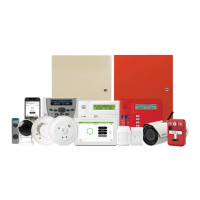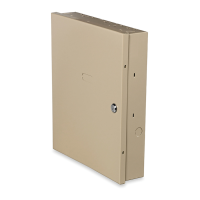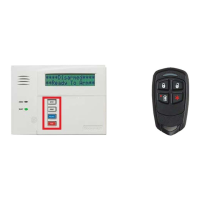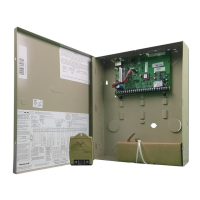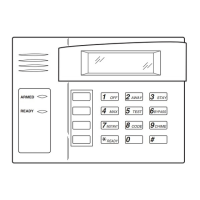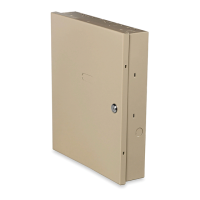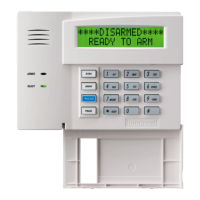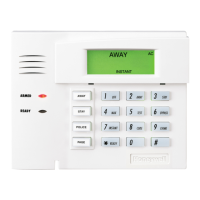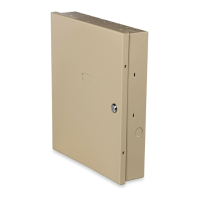
Do you have a question about the Honeywell VISTA-250FBP and is the answer not in the manual?
| Brand | Honeywell |
|---|---|
| Model | VISTA-250FBP |
| Category | Security System |
| Language | English |
Introduction to the Honeywell security system, its components, and basic functions.
Details on zones, fire, burglary, and CO protection, plus alarms and schedules.
Covers device timers, partition access, master keypads, and self-help features.
Discusses keypad features like display, sounder, and important warnings.
Describes alpha keypads with alphanumeric LCDs for system messages and zone descriptors.
Details the primary functions of keypad keys (1-9, 0, *, #) for system control.
Explains the specific purpose and operation of each numbered and function key.
Explains the meaning of system status LEDs and keypad audible notifications.
Explains installer-programmed exit and entry delays for system operation.
Covers user-assigned codes, authority levels, and user numbers for system access.
Explains the duress code for silent alarming under threat, notifying the central station.
Details the option to arm the system quickly using the '#' key without a code.
Lists six authority levels and their system function capabilities.
Outlines rules for adding, changing, and deleting users and their codes.
Guides through adding new user codes and assigning authority levels.
Explains how master/manager users can change existing user codes.
Details the procedure for deleting a user's code and associated information.
Describes using the GOTO command to operate keypads in different partitions.
Explains the Global Arming option allowing users to arm multiple partitions simultaneously.
Details the function of a Master keypad for viewing all partition statuses.
Explains how partitions affect automatic arming/disarming of a common lobby partition.
Discusses how 'global' and 'non-global' codes influence lobby partition operation.
Guides on using the READY key to display faulted zones before arming.
Explains how to display all programmed zone descriptors using the READY key.
Details how to bypass specific zones to keep them unprotected while armed.
Describes bypassing all open zones simultaneously without individual entry.
Explains how to view zones that have been previously bypassed.
Outlines how to bypass a pre-defined group of zones.
Explains STAY mode for perimeter protection while occupants are home.
Describes automatic zone bypassing in STAY mode based on exit delay activity.
Explains INSTANT mode for perimeter protection without entry delay.
Details AWAY mode for full protection when no one is on the premises.
Explains MAXIMUM mode for vacant premises with no interior movement.
Describes the Quick Exit feature to leave an armed partition without disarming.
Explains how to disarm the system and silence alarms using the OFF key.
Describes viewing and clearing alarm history from the keypad display.
Explains the function of a keyswitch for arming/disarming and its indicator lights.
Details the procedure for arming in AWAY and STAY modes using the keyswitch.
Explains how to disarm the system using the keyswitch.
Guides on activating and deactivating CHIME mode to alert on door/window openings.
Explains how to view messages from the monitoring agency or installer on the keypad.
Introduces special key combinations for manually activating panic functions.
Lists key combinations for different panic functions and their descriptions.
Explains the use of relays for functions like unlocking doors via keypad commands.
Details the keypad command to activate a relay, such as unlocking a door.
Describes using the #70 command to turn devices on/off via the keypad.
Explains how master/manager users can manually delay automatic arming times.
Describes how to override normal schedules with temporary ones.
Guides on setting up temporary schedules for disarm and arm windows.
Explains device timers for controlling lights/appliances based on times and days.
Details methods to initiate random schedules for devices to simulate occupancy.
Lists action codes for controlling relays and relay groups instantly.
Provides action codes for instant arming/disarming functions like STAY, AWAY.
Lists action codes for auto-bypassing or unbypassing zones based on time windows.
Details action codes for enabling opening/closing windows by partition or group.
Lists action codes for managing access points, groups, and partitions.
Covers commands for enabling/disabling access point groups.
Guides on accessing and viewing the system's event log by category or date.
Explains how to use the TEST key to enter Burglary Walk Test mode for checking zones.
Provides steps to test doors, windows, motion detectors, and smoke detectors.
Steps for handling fire emergencies and silencing alarms.
Managing event displays and conducting fire drill tests.
Understanding typical trouble displays and their meanings.
Addressing AC loss, battery issues, and scheduling professional service.
Provides recommended steps for establishing and practicing an emergency escape plan.
Offers general advice for maintaining the security system's reliability.
Guides on replacing batteries and understanding low battery indicators.
Explains how to silence low battery warning tones and clear display.
Provides advice on cleaning and handling system components for proper operation.
Explains how to navigate through events displayed on the keypad.
Details procedures for silencing fire alarms and clearing display messages.
Explains how to silence troubles/supervisory conditions and potential auto-reset.
Check zones and display all programmed zone descriptors.
Learn how to arm and disarm the system in various modes.
Procedures for bypassing individual, faulted, or group zones.
Activate chime for openings and test system functions.
View messages, user capabilities, GOTO partition, and self-help.
Add, change, and delete user codes and authority levels.
Control output devices and activate random schedules.
Table detailing sounds, their causes, and corresponding keypad displays.
Compliance with FCC rules for Class B devices and interference guidelines.
Details FCC Part 15 and IC RSS 210 compliance conditions for device operation.
Advises on troubleshooting telephone line issues and system disconnection.
Information on FCC Part 68 rules, REN, RJ31X jacks, and telephone company interaction.
Explains the meaning of Canadian DOC certification for telecommunications equipment.
Discusses inherent limitations of alarm systems, including bypass, power, and detector constraints.
Outlines Honeywell's 24-month limited warranty for products and exclusions.
Lists conditions under which the Honeywell warranty is voided.
Clarifies warranty limitations, disclaims implied warranties, and limits liability.
